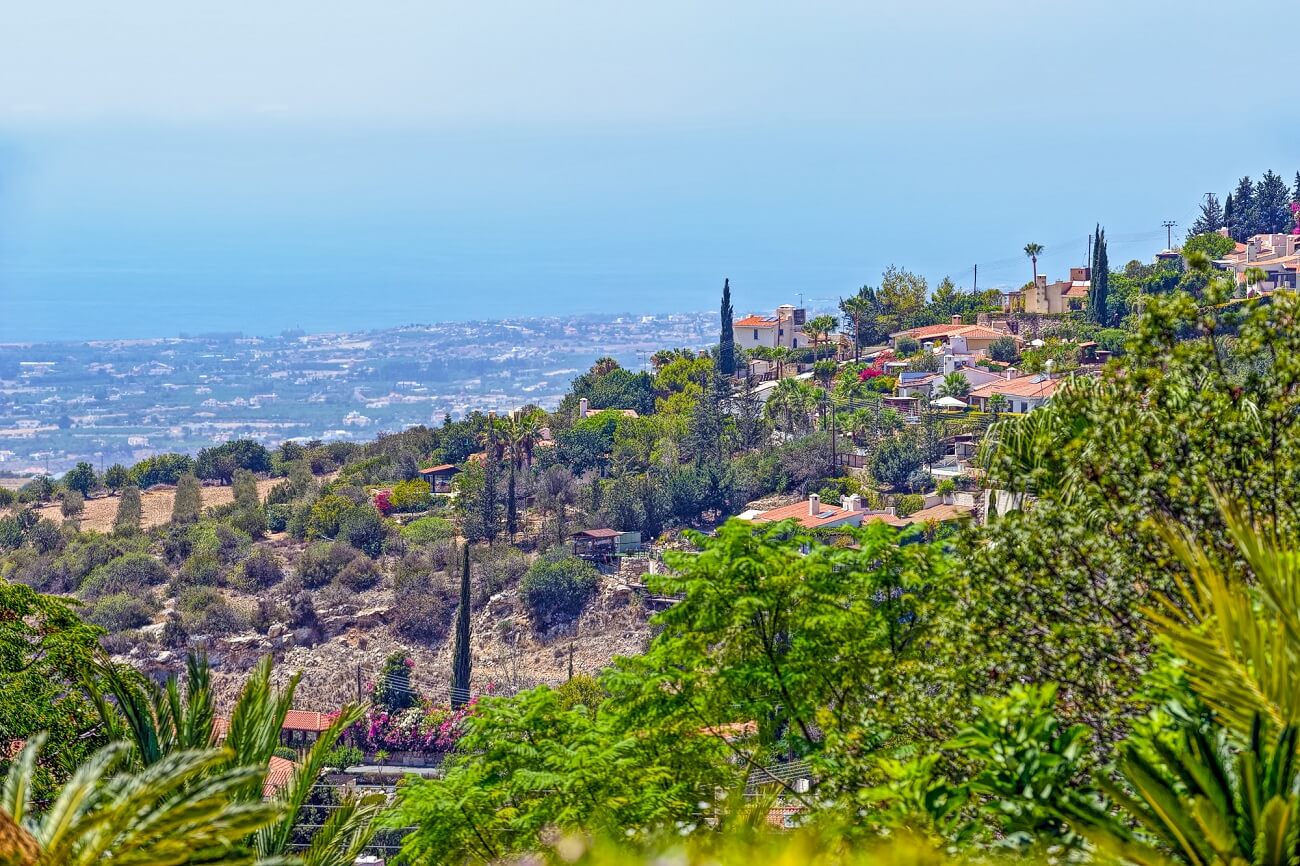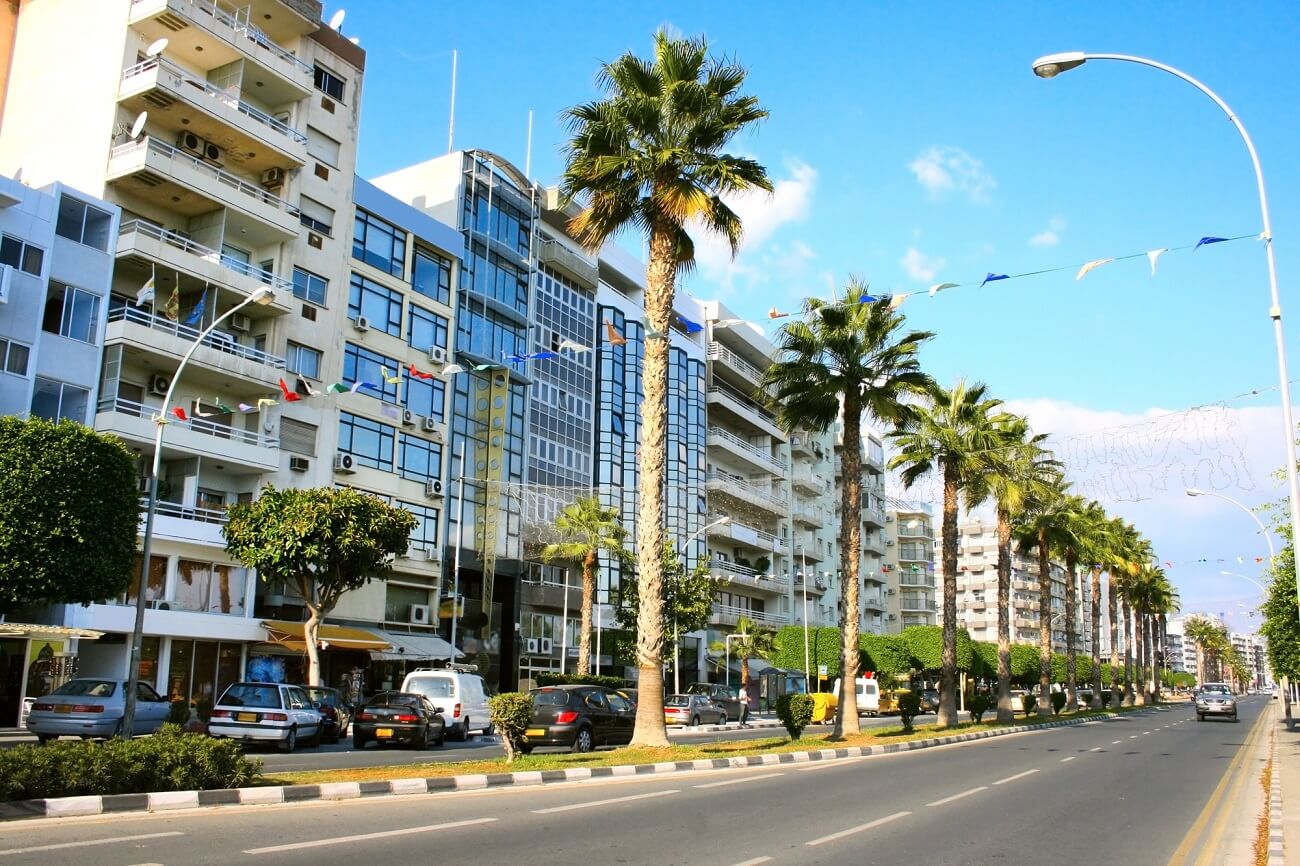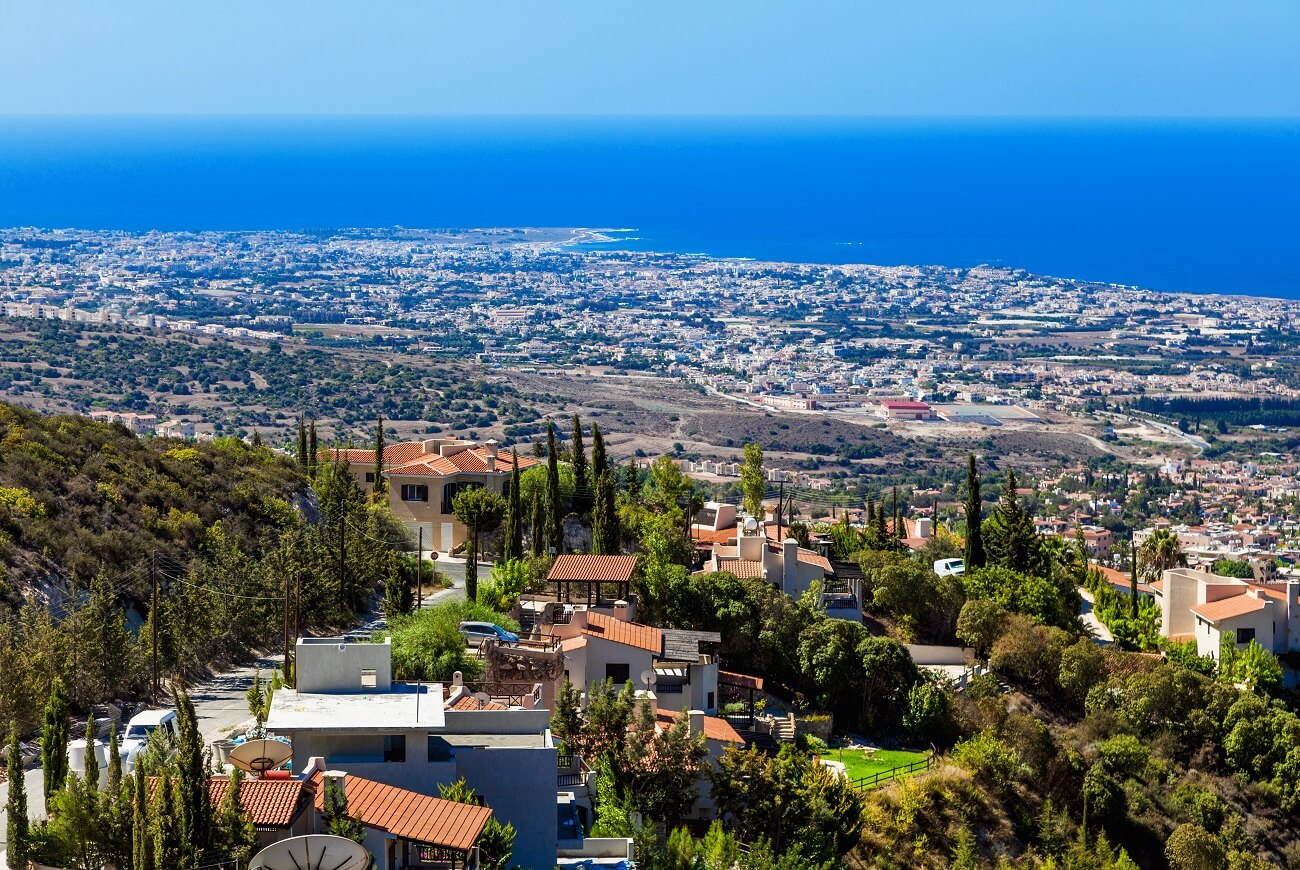

Amazing Cyprus attracts not only by the sea and always sunny weather. This is the best European destinations with unique historical sites and attractions. In other words, Cyprus is the beautiful beaches and the ancient culture of the Mediterranean "in one bottle". The island is very attractive for active and curious travelers. If you are a connoisseur of castle architecture, there are many interesting places in Cyprus for you.

Depositphotos
Paphos Caste (Pafos Castle)
On the western side of the harbor of Paphos, the ancient city of Cyprus, there is an old castle. It is one of the most striking examples of the island's Venetian architecture, with Ottoman additions. It belongs to the first half of the 13th century. For guests of Paphos, the castle is the central attraction, from where all excursions start. The foundation of Paphos Castle was preceded by an earthquake in 1222, which significantly destroyed the defensive fort of Saranta. Kolones (7th century), located near.
Since 1592, when Cyprus was captured by the Ottoman Turks, the castle has been significantly fortified and restored, as evidenced by an old Turkish inscription above the entrance gate. During the Ottoman rule, the fortress was a prison and even a mosque. In the 20th century, Paphos Castle served as a salt warehouse for a long time. Today it houses a museum. The history of the old castle of Paphos can be experienced by walking among the well-preserved stone vaults. Guided tour recommended.
- Location: Paphos, Kato Paphos area.
- Opening hours: daily, except holidays. In the warm season (April-September) - from 8:30 to 19:30. In the winter season (October-March) - until 17:00.
- Admission fee: 2.5 euros.

Depositphotos
Saranta Kolones Castle
Or the Castle of Forty Columns. An amazing place close to the Paphos fortress. Saranta Kolones is her predecessor. From the ancient Byzantine castle of the 7th century, impressive ruins remain, which today are part of the Paphos Archaeological Park and a UNESCO World Heritage Site. In addition to the castle, the ruins of several ancient houses, an acropolis, a temple and an odeon have been preserved in the park.
- Location: Paphos, Archaeological Park (about 600 meters from the harbor and castle).
- Opening hours of the park: daily, except holidays. In the warm season (April-September) - from 8:30 to 19:30. In the winter season (October-March) - until 17:00.
- Admission fee: 4.5 euros.

Depositphotos
Larnaca Medieval Castle
In terms of content and entertainment, Larnaca Castle could be given first place among the medieval pearls of Cyprus. The fortress was founded in the 14th century and rebuilt by the Ottomans in 1625. In past centuries, it was the main defensive structure in the southern part of the island. During the British rule in Cyprus, the premises of the Larnaca castle were used as a police station and a prison, and executions were carried out. The old gallows can be seen here today as a museum exhibit. During During the First World War, the castle passed into the hands of the German invaders, which also affected its history.
Since the middle of the 20th century, the Historical Museum has been opened in the premises of the fortress. In the courtyard and the surrounding area there are interesting locations that attract tourists. For example, old cannons and stone tombstones of the 14th century, brought here on from the temples of Nicosia. A guided tour will be more interesting.
- Location: Larnaca, southern part of Finikoudes promenade.
- Opening hours: daily, except holidays. In the warm season (April-September) - from 8:00 to 19:30. In the winter season (October-March) - until 17:00.
- Admission fee: 2.5 euros.

Depositphotos
Limassol Castle
One of the main architectural heritage of the Middle Ages of all that is in Cyprus. The castle has a rich history and is based on the ruins of a Byzantine fortress from the 10th century. It is the central attraction of the Old Town and is covered with beautiful legends. According to one of them, in these walls in 1191, the King of England, Richard I the Lionheart, married Princess Berengaria. Navarre.
During its thousand-year history, the castle was repeatedly damaged and rebuilt during several sieges and earthquakes. It suffered serious destruction during the Cypriot-Genoese war in 1373. The complete restoration of the castle of Limassol was carried out by the Venetians before the conquest of Cyprus by the Ottoman Turks in 1570. During the siege, the walls again suffered significantly, but were strengthened over the following years.
Today, the castle houses the expositions of the Cyprus Museum of the Middle Ages. It represents a huge number of objects from past eras found on the territory of the fortress and on the island as a whole. Among other things - antique jewelry, bronze, wood, ceramics, household items and weapons. The tour will be very exciting. From the observation deck of the castle offers views of the whole of Limassol.
- Visiting time: daily from 8:00 to 17:00, on Sundays from 10:00 to 13:00.
- Ticket price: 4.50 euros.
- Location: Richard and Berengaria Street. Public transport stop harbor.

Depositphotos
Kolossi Castle
Near Limassol, in the village of Kolossi, there is a medieval castle from 1210. It was built during the reign of King Hugh I de Lusignan. The name came from the local landowner Garinus de Colossi. For a time, the castle was the home of the Knights Hospitaller, who grew sugarcane and grapes. In that era, the recipe for the world-famous Cypriot wine "Commandaria" was born here. Later, for several years, he was at the disposal of the Knights Templar. The last time Kolossi Castle was rebuilt was in 1454.
The main donjon tower is a three-level building in the Gothic style, with an observation deck at the top. This is the best preserved example of medieval military architecture in Cyprus. On the territory of the castle, you can also see the ruins of a sugar factory of the 13th century, the ruins of an ancient fountain and an aqueduct. Nearby there is also a small church dating back to the 12th century.
- Location: 10 kilometers west of Limassol.
- Opening hours: daily, except holidays. In the warm season (April-September) - from 8:30 to 19:30. In the winter season (October-March) - until 17:00.
- Admission fee : 2.5 euros.

Depositphotos
Medieval castles of Turkish Cyprus
In the occupied part of the island, which is now the Turkish Republic of Northern Cyprus, there are also several amazing places saturated with the atmosphere of the Middle Ages.
Fortress Famagusta Walled City
The construction of the fortification in Famagusta took place in 1310. Later, after almost 2 centuries, a reconstruction was carried out. This is a powerful defensive structure in the form of four towers connected by corridors with loopholes. Today, a museum is open within the walls of the fortress. During the tour, you can hear the legend of why this place is often called the castle or Othello's tower. According to legend, once a local commandant in a fit of jealousy ordered to kill his wife. Ancient cannons and stone cannonballs are installed in the courtyard, and an original bas-relief of the Venetian lion of St. Mark, created many centuries ago, is fixed above the entrance to the castle.
- Location: Famagusta.
- Opening hours: daily, except holidays. In the warm season (April-September) - from 8:30 to 19:30. In the winter season (October-March) - until 17:00.
- Cost of visiting: about 2 euros.

Depositphotos
Kantara Castle
The most mysterious castle in Northern Cyprus. Kantara is located in the northeastern part of the island, in the Kyrenia mountains. According to historians, the castle was built in the 10th century to defend against Arab raids. Together with the fortress of Buffavento and the castle of St. Hilarion, Kantara was part of the defensive fort of the northern part of Cyprus. After the siege of the Lombards in 1228, the fortress was completely restored.
An unusual place among the mountain slopes, where you can feel the real spirit of the Middle Ages - stone frames, secret stairs, ancient vaulted ceilings and the incredible grandeur of the building. On the top of Mount Kantara, a small chapel of the Virgin of Kantara has been preserved in its original form . There are campsites near the castle. These are places for romantic trips among the nature of the Kyrenia mountains.
How to get there: by car from Famagusta on the Gazimagusa - Karpas highway.

Depositphotos
Kyrenia Castle (Girne castle)
In the east of the old harbor in Kyrenia, a castle from the 16th century rises, which has been perfectly preserved to this day. It is the main historical decoration of Turkish Cyprus. By medieval standards, the location of the castle is strategic, as evidenced by the ancient fortifications on which the castle was erected. Its history is very rich, which you can learn about during the tour.
Inside the castle there is a museum with a very interesting exposition. The main value is the remains of a merchant ship found near Kyrenia. The wreck dates back to the 4th century BC, and the most incredible thing is that part of the cargo, including dishes, amphorae and even almonds, has survived to this day.
In addition to the Shipwreck Museum, on the territory of the castle you can visit the Museum of Torture and the Open Air Museum, where ancient dwellings with household items are recreated.
- Opening hours: from April to October - from 8:00 to 18:00, from November to March - until 16:00.
- Admission fee: 1.2 euros. Children under 12 years old enter free of charge.

Depositphotos
Saint Hilarion Castle
Initially, the castle of St. Hilarion was built as a monastery and named after a hermit monk. It later became part of the island's defensive fort, along with the castles of Kantara and Buffavento . During the reign of the Lusignan dynasty, the monastery was significantly fortified. The castle consisted of three levels, where the stables, garrisons, church and living quarters were located. The surviving ruins are worth seeing to appreciate the grandeur of real medieval forts.
- How to get there: only by car. From Nicosia via Kermia border crossing Crossing, along the Nicosia-Kirenia highway Motorway to signpost St. Hillarion castle.
- Time to visit: daily, from 9:00 to 17:00.
- Admission fee: 2.5 euros.

Depositphotos
Buffavento Castle
Buffavento is the third castle-fortress in the Kyrenia Heights, which was one of the three defensive forts in northern Cyprus. It was built at an altitude of 940 meters above sea level, and the name in translation sounds like a castle blown by the winds. To climb to it, you need to spend a lot of effort, but the views from the top are worth it. The majestic walls of the castle, built in the 10th century, are also very impressive.
Location: 20 kilometers southeast of Kyrenia.

Depositphotos
More articles
- Rains in Bali: pros and cons of the wet season
- Hotels of Ayana complex in Bali
- Gunung Batur: how to get to the main volcano in Bali
- Likupang on Sulawesi Island in Indonesia
- Mauritius Attractions: 27 Best Places to Visit
- Bali for Two: 24 Romantic Getaway Ideas
- Top 20 Bali Tours: Itineraries, Offers, and Prices
- Bali's Best Beach Clubs - 13 Luxury Oases
- Tips for tourists in Indonesia - how to avoid spoiled holidays
- Yoga Studios in Bali - where to catch Zen on the Island of the Gods



